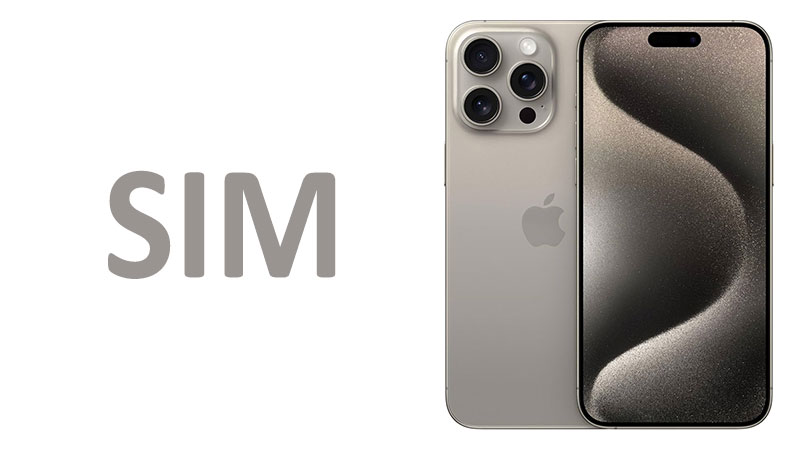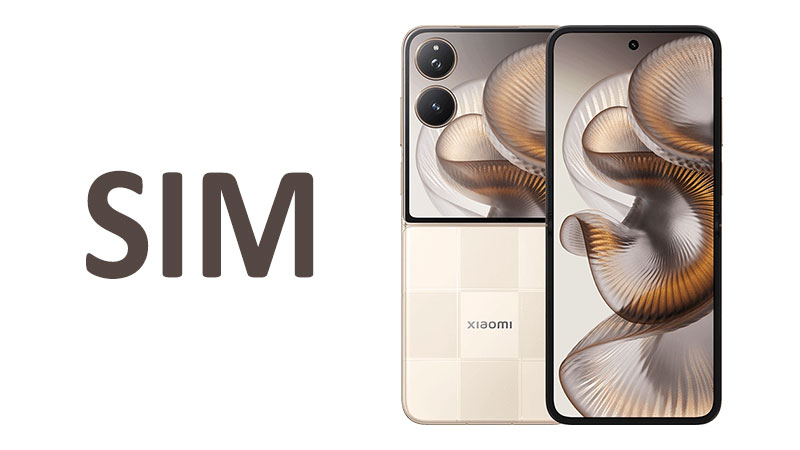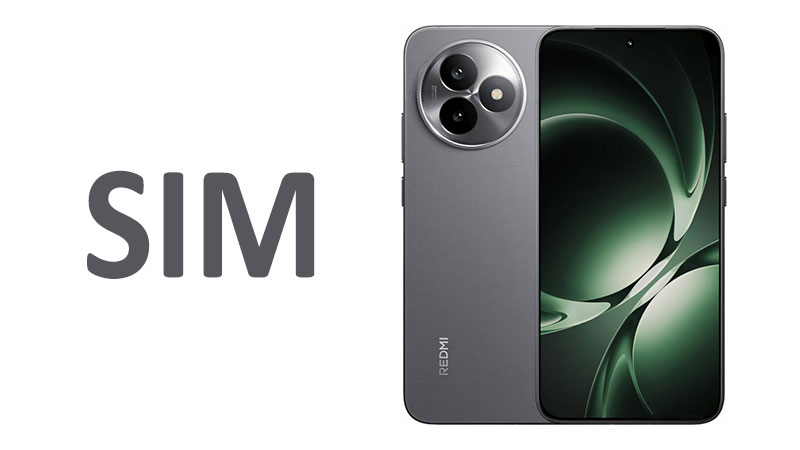The Apple iPhone 15 Pro Max SIM configuration represents a major shift in mobile connectivity. This flagship device pushes the boundaries of wireless technology and flexibility. Understanding its SIM options and connectivity suite is crucial for potential buyers. These features directly impact daily use, especially for international travelers and power users. This comprehensive review explores the eSIM technology, the dual-SIM variations, and the advanced wireless and wired connections. We will cover every vital aspect a consumer needs to know before investing in this device. This guide aims to be your definitive resource on the iPhone 15 Pro Max’s networking capabilities.
The eSIM Revolution in the iPhone 15 Pro Max
Apple has increasingly championed the embedded SIM, or eSIM. The iPhone 15 Pro Max continues this trend aggressively. An eSIM is a digital SIM card. It allows you to activate a cellular plan from your carrier without a physical nano-SIM card.
eSIM-Only: The U.S. Model
The model sold in the United States has fully embraced the digital future. It is an eSIM-only device. This version completely lacks a physical SIM tray. Users must activate their cellular service digitally.
This specific model can store eight or more eSIM profiles. However, it can use a maximum of two lines simultaneously. This is the definition of Dual-SIM functionality in the U.S. market. The shift simplifies device design. It also improves water and dust resistance slightly.
eSIM vs. Physical SIM: A Specialized Comparison
The transition from the traditional physical SIM to eSIM offers several advantages. Physical SIM cards are small plastic chips. They can be easily lost or damaged. They also require a physical tool to swap out.
eSIM activation is fast and remote. You can switch carriers or plans almost instantly. This process happens entirely through software. For travelers, activating a local plan is simple. You can do it upon landing without searching for a physical store. The eSIM platform improves security. It is harder to clone or exploit than a physical card. This feature protects your phone number and data.
Previous iPhone models, like the iPhone 13 and 14 series, offered both eSIM and physical SIM options internationally. The 15 Pro Max, therefore, marks a firm step toward the all-digital SIM for the U.S. market. Competitors, like Samsung’s Galaxy S series, also offer eSIM support but often retain the physical slot globally. Apple is leading the charge toward the removal of the physical slot.
Pros and Cons of the eSIM Implementation
The eSIM-only approach has distinct pros and cons.
Pros of eSIM
- Improved Security: Your identity is tied to the phone’s hardware. This makes theft and unauthorized use much harder.
- Seamless Switching: Switching between carriers or international travel plans is quick and easy.
- Device Flexibility: Storing multiple plans (eight or more) allows for great carrier flexibility.
- Better Durability: Removing the SIM tray reduces one point of entry for moisture and dirt.
- Digital Convenience: Activation often takes only a few minutes from home.
Cons of eSIM
- Transfer Difficulty: Moving your line to a new phone sometimes requires carrier contact or internet access.
- Less Global Compatibility: Some smaller international carriers or older networks may not yet support eSIM activation.
- Troubleshooting: Troubleshooting network issues can be complex without the ability to physically swap SIMs.
Dual-SIM Capabilities and Global Variations
The Dual-SIM capability remains a cornerstone feature of the iPhone 15 Pro Max. This functionality allows users to maintain two active phone numbers on a single device. This is ideal for balancing work and personal life. It is also perfect for those who require separate plans for data and voice.
International Model: Nano-SIM + Dual eSIM
Most global markets receive a more flexible version. The International iPhone 15 Pro Max supports one physical Nano-SIM and can store multiple eSIMs. It allows for a maximum of two active lines at any given time. This configuration offers the best of both worlds.
Users can keep their primary number on the physical SIM. They can use the eSIM for travel data or a secondary work line. This flexibility is highly valued by consumers worldwide. It caters to regions where eSIM adoption is still growing. This Hybrid Dual-SIM approach ensures maximum carrier compatibility.
China Model: Dual Nano-SIM
Due to regulatory and infrastructural needs, the model sold in mainland China is different. The Chinese iPhone 15 Pro Max features a unique physical Nano-SIM + Nano-SIM tray. This means it supports two physical SIM cards.
This design accommodates the preferences of the massive Chinese mobile market. It allows for local dual-physical card usage, a common practice there. This model does not rely on eSIM. This is a critical factor for buyers in the region. Consumers must verify the model number to ensure they get the correct SIM configuration.
Important Points for a Buyer
Buyers must understand their region’s specific model. A U.S. model buyer cannot simply insert a physical SIM card overseas. Conversely, an international model offers more choices. Always check your local market’s configuration before purchasing.
The ability to run two lines simultaneously is powered by Dual SIM Dual Standby (DSDS) technology. This means both lines remain active and ready for calls or messages. While one line is actively in use for a call, the second line will momentarily show as unavailable. This is a standard limitation of DSDS systems.
Next-Generation Cellular Connectivity: 5G and Beyond
The iPhone 15 Pro Max is built on a foundation of robust, cutting-edge cellular technology. It is designed to handle the fastest networks globally. The supported technologies ensure both speed and wide compatibility.
Power of 5G Performance
The inclusion of 5G is the primary draw for modern connectivity. The 15 Pro Max supports various 5G bands, including mmWave (in the U.S.) and Sub-6 GHz. This extensive band support guarantees access to high-speed data. It provides low-latency performance in densely populated areas. 5G connectivity dramatically improves download and upload speeds. It unlocks capabilities like smooth 4K streaming and instant cloud gaming on the go.
The device likely features an upgraded modem compared to its predecessor. This enhances power efficiency and signal reliability. Stronger signal acquisition means more consistent speeds, even in fringe areas. Fast mobile data is now an expected feature. The iPhone 15 Pro Max delivers this promise reliably.
Full Technology Stack Support
The device’s network support is comprehensive. It includes legacy and current standards for global reach:
- GSM / CDMA: These provide support for basic voice and older data services. They ensure coverage even in remote areas.
- HSPA / EVDO: These are the backbone of 3G and some older 4G services. They act as reliable fallbacks when 4G LTE is unavailable.
- LTE (4G): This remains the widespread, high-speed mobile standard globally. The phone supports a vast array of LTE bands.
- 5G: The premier technology, offering the fastest available speeds.
This wide array of supported technologies ensures that the iPhone 15 Pro Max operates effectively anywhere in the world. It provides backward compatibility. Users do not need to worry about losing service in areas with slower networks.
Specialized Comparison: 5G Speeds
While Apple does not detail the exact modem, industry teardowns suggest improvements. The modem in the 15 Pro Max offers better performance than the iPhone 14 Pro Max. Users experience higher peak speeds and better power consumption under load. Competitor flagship phones use similar modems. However, Apple optimizes the antenna design and software integration. This often results in superior real-world performance. Improved 5G speed is a key selling point for this generation.
Pros and Cons of Cellular Connectivity
Pros
- Future-Proof: Comprehensive 5G band support ensures long-term usability.
- Global Roaming: Wide support for GSM, CDMA, LTE, and 5G enables seamless international travel.
- Reliable Performance: Optimized modem and antenna integration provide stable connections.
Cons
- 5G Availability: True high-speed 5G performance is still limited to major urban centers worldwide.
- Battery Drain: Utilizing 5G networks, especially mmWave, can consume battery power more quickly.
Advanced Wireless Networking: Wi-Fi 6E and Bluetooth 5.3
Connectivity extends beyond the cellular network. The iPhone 15 Pro Max features the latest in short-range wireless technologies. These enhancements significantly boost home and office networking. They also improve accessory compatibility.
Wi-Fi 6E: Tri-Band Performance
The inclusion of Wi-Fi 6E is a major upgrade. Wi-Fi 6E extends Wi-Fi functionality into the 6 GHz frequency band. This is a crucial addition to the standard 2.4 GHz and 5 GHz bands. The technology is described as “tri-band.”
The 6 GHz band offers wider channels. It experiences much less congestion than older bands. This results in significantly faster speeds and lower latency. This is particularly noticeable in crowded apartments or office buildings. The phone can connect to Wi-Fi 6E routers for a dedicated, high-speed connection. This capability is essential for large file transfers and seamless streaming.
Bluetooth 5.3: Efficient Accessory Management
The iPhone 15 Pro Max includes Bluetooth 5.3. This latest standard brings several key improvements. Bluetooth Low Energy (LE) Audio is a major feature. It enhances audio quality and power efficiency for wireless earbuds and headphones.
Version 5.3 also improves security and connection stability. It is optimized for the low-power consumption required by modern wearables. This ensures longer battery life for connected accessories. The faster data transfer rates improve overall device-to-device communication.
Important Points for the Network User
To fully utilize Wi-Fi 6E, users need a compatible router. Connecting the phone to an older Wi-Fi 5 or Wi-Fi 6 router will still work. However, you will not access the benefits of the 6 GHz band. Consider a router upgrade to maximize your iPhone’s connectivity.
Bluetooth 5.3 means future accessories will connect more reliably. Users can expect better performance from new AirPods or other LE Audio-compatible devices. This is a subtle yet important future-proofing feature.
Pros and Cons of Wireless Networking
Pros
- Lightning-Fast Wi-Fi: Wi-Fi 6E offers a dedicated, uncongested 6 GHz channel for peak speeds.
- Low-Latency Audio: Bluetooth 5.3 supports LE Audio for improved battery life and audio quality.
- Future-Ready: Both standards are the current industry leaders.
Cons
- Router Requirement: Wi-Fi 6E benefits require purchasing a new, compatible router.
- Bluetooth Range: The range improvements in 5.3 are modest compared to older versions.
Precision Location and Auxiliary Features
Connectivity features also include precise positioning and data transfer mechanisms. The iPhone 15 Pro Max excels in these auxiliary areas. It provides highly accurate location services and powerful wired data transmission.
Dual-Frequency GPS for Unmatched Accuracy
The phone uses Dual-Frequency GPS technology. This means it receives signals from both the L1 and L5 GPS frequency bands. The combination allows the device to filter out errors caused by obstacles like tall buildings. This results in far more accurate location data.
This precision is crucial for navigation apps. It is also vital for location-based services and fitness tracking. The device supports an array of global positioning systems, including:
- GPS (L1+L5)
- GLONASS
- GALILEO
- BDS (BeiDou)
- QZSS
- NavIC (Indian Regional Navigation Satellite System)
This exhaustive support ensures rapid and precise location fixes anywhere in the world. It provides redundancy and increased reliability.
NFC and Essential Features
The inclusion of NFC (Near Field Communication) is standard. This technology is used for Apple Pay transactions. It is also essential for digital car keys and connecting to certain accessories. The NFC capability is seamless and widely supported globally.
One detail to note is the absence of an integrated Radio tuner. Apple devices have historically lacked this feature. Users must rely on internet streaming services for radio content.
USB-C 3.2 Gen 2: High-Speed Wired Connectivity
The shift to USB Type-C is a landmark change for the iPhone 15 Pro Max. This is not just a change of port shape. The phone supports the high-speed USB 3.2 Gen 2 standard.
This standard allows for data transfer speeds of up to 10 Gbps. This is a twenty-fold increase over the previous Lightning port’s USB 2.0 speeds. Professionals can quickly transfer large ProRes video files. Photographers can rapidly move high-resolution images to a Mac. The port also supports DisplayPort functionality. This allows for direct video output to an external monitor or TV. This makes the iPhone a versatile content creation and presentation tool.
Specialized Comparison: USB-C Speed
The previous iPhone 14 Pro Max was limited to USB 2.0 speeds (up to 480 Mbps). The 15 Pro Max’s USB 3.2 Gen 2 support is a major differentiator. While standard iPhone 15 models use the USB-C port, they are limited to the slower USB 2.0 speeds. The Pro Max features the full 10 Gbps bandwidth. This is comparable to the fastest ports on modern laptops.
Pros and Cons of Auxiliary Features
Pros
- Superior Location: Dual-frequency GPS offers highly accurate positioning for navigation.
- Blazing Data Transfer: USB 3.2 Gen 2 enables professional-grade file transfers.
- Display Output: DisplayPort support simplifies external display connections.
Cons
- No FM Radio: Users must rely on streaming for radio access.
- Cable Requirement: Full 10 Gbps speed requires a specific, compatible USB 3.2 Gen 2 cable.
Buyer and Reader Guide: Key Takeaways
Understanding the iPhone 15 Pro Max’s connectivity is essential. This phone is designed for users who demand the best possible network performance. It caters to those who travel frequently and require professional-grade data handling.
For American buyers, the eSIM-only reality means planning for digital activation. Newcomers to eSIM must research their carrier’s transfer process. Travelers using the International model benefit from the hybrid approach. They can keep a home line active and add a travel eSIM easily.
The connectivity package is robust and forward-looking. Wi-Fi 6E and Bluetooth 5.3 enhance the local wireless experience. The USB-C 3.2 Gen 2 port is a game-changer for content creators. It eliminates the bottleneck of slow wired data transfer. All these components create a seamless, high-speed user experience.
Comprehensive Conclusion and Final Decision Advice
The Apple iPhone 15 Pro Max sets a new connectivity benchmark. Its SIM, Dual-SIM, and comprehensive wireless features are industry-leading. The shift to eSIM-only in the U.S. demonstrates confidence in the digital future. This provides security and flexibility benefits. Global variants maintain a balance with a physical SIM slot. This ensures broader carrier support.
The connectivity suite is truly next-generation. It features the power of widespread 5G, the low latency of Wi-Fi 6E, and the efficiency of Bluetooth 5.3. Precision dual-frequency GPS makes navigation flawless. The high-speed USB-C 3.2 Gen 2 port transforms data workflow for professionals.
The decision to buy rests on your specific needs. If you prioritize speed, future-proofing, and the ability to manage multiple lines digitally, this phone is unmatched. If you are an American power user or international content creator, the connectivity features alone justify the upgrade.
Let me know if you would like to explore the complexities of eSIM activation in more detail or compare the USB-C transfer speeds with professional camera equipment.
Frequently Asked Questions (FAQ)
Can the U.S. iPhone 15 Pro Max use a physical SIM card internationally?
No, the U.S. model is entirely eSIM-only. It lacks the physical slot and tray needed for a Nano-SIM card. International travel requires activating a local eSIM plan.
How many active phone numbers can I use at once?
The iPhone 15 Pro Max supports up to two active lines simultaneously. These lines can be any combination of Nano-SIM and eSIM, depending on your regional model.
What is the benefit of Wi-Fi 6E on this phone?
Wi-Fi 6E uses the 6 GHz frequency band. This band is uncongested and provides significantly faster speeds and lower latency. This improves performance in crowded Wi-Fi environments.
Is the USB-C port faster than the older Lightning port?
Yes, the USB-C port on the Pro Max supports USB 3.2 Gen 2. This allows for data transfer speeds of up to 10 Gbps. This is twenty times faster than the previous Lightning port.
Does the iPhone 15 Pro Max support NavIC positioning?
Yes, the phone supports a full range of global positioning systems. This includes NavIC, along with GPS (L1+L5), GLONASS, GALILEO, BDS, and QZSS.



